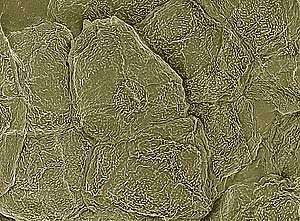 The biological mechanism of sunburn – the reddish, painful, protective immune response from ultraviolet (UV) radiation – is a consequence of RNA damage to skin cells, report researchers at the University of California, San Diego School of Medicine and elsewhere in the July 8, 2012 Advance Online Publication of Nature Medicine.
The biological mechanism of sunburn – the reddish, painful, protective immune response from ultraviolet (UV) radiation – is a consequence of RNA damage to skin cells, report researchers at the University of California, San Diego School of Medicine and elsewhere in the July 8, 2012 Advance Online Publication of Nature Medicine.
The findings open the way to perhaps eventually blocking the inflammatory process, the scientists said, and have implications for a range of medical conditions and treatments.
“For example, diseases like psoriasis are treated by UV light, but a big side effect is that this treatment increases the risk of skin cancer,” said principal investigator Richard L. Gallo, MD, PhD, professor of medicine at UC San Diego School of Medicine and Veterans Affairs San Diego Healthcare System. “Our discovery suggests a way to get the beneficial effects of UV therapy without actually exposing our patients to the harmful UV light. Also, some people have excess sensitivity to UV light, patients with lupus, for example. We are exploring if we can help them by blocking the pathway we discovered.”

A photomicrograph of superficial keratinocytes or skin cells. Image courtesy of Thomas Deerinck, National Center for Microscopy and Imaging Research, UC San Diego.
We see and feel the process as sunburn.
“The inflammatory response is important to start the process of healing after cell death,” said Gallo. “We also believe the inflammatory process may clean up cells with genetic damage before they can become cancer. Of course, this process is imperfect and with more UV exposure, there is more chance of cells becoming cancerous.”
Gallo said it is still not known how gender, skin pigmentation and individual genetics may affect the mechanism of sunburn. “Genetics is closely linked to the ability to defend against UV damage and develop skin cancers,” he said. “We know in our mouse genetic models that specific genes will change how the mice get sunburn. Humans have similar genes, but it is not known if people have mutations in these genes that affect their sun response.”
Material adapted from University of California, San Diego Health Sciences.
No comments yet.